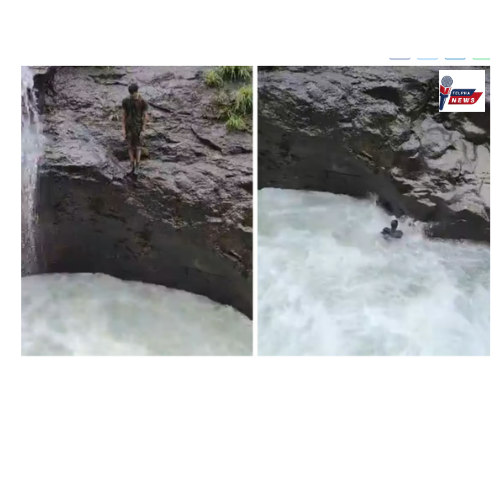A tragic incident at Tamhini Ghat serves as a stark reminder of the dangers posed by monsoon treks. Learn more about the risks and safety measures to consider during such adventures.
Introduction
Monsoon season, with its lush greenery and cascading waterfalls, is a favorite time for trekkers and nature enthusiasts in Maharashtra. However, the beauty of these landscapes often conceals lurking dangers. A recent tragic incident at Tamhini Ghat highlights the importance of safety and caution during such adventures.
The Incident
On a seemingly ordinary weekend outing, Swapnil Dhawde, a youth from Pune’s Bhosari, found himself in a life-threatening situation. Dhawde, along with 32 others from his gym, embarked on the Plus Valley trek route in Tamhini Ghat. What started as an exhilarating experience quickly turned tragic.
A viral video shows Dhawde jumping into a waterfall, a common activity during monsoon treks. However, the gushing waters proved too strong. Despite his efforts to grab onto rocks, the powerful current swept him away. This heartbreaking incident has sent shockwaves through the community and serves as a grim reminder of the unpredictable nature of such treks.
The Dangers of Monsoon Treks
Monsoon treks are particularly perilous due to several factors:
- Sudden Water Surges: Heavy rainfall can cause sudden and dramatic increases in water levels, making rivers and waterfalls extremely dangerous.
- Slippery Terrain: The wet, muddy paths become slippery, increasing the risk of falls and injuries.
- Limited Visibility: Dense fog and heavy rain can obscure the path, leading trekkers astray.
- Remote Locations: Many popular trekking spots are in remote areas with limited access to immediate medical assistance or rescue services.
Recent Incidents
This tragic event at Tamhini Ghat is not an isolated case. Just a day prior, five family members were swept away due to a sudden surge in water levels near Bhushi Dam in Lonavala. Continuous rainfall had unexpectedly increased the water flow at a waterfall where the family had stopped, resulting in the loss of lives and highlighting the inherent risks of monsoon outings.
Safety Measures for Monsoon Treks
- Research and Plan: Before setting out, thoroughly research the trek route, weather conditions, and any potential hazards.
- Travel with Experts: Join groups led by experienced trekkers or guides who are familiar with the terrain and emergency procedures.
- Check Weather Updates: Keep an eye on weather forecasts and avoid trekking during heavy rainfall warnings.
- Stay Informed: Be aware of local advisories and heed warnings from authorities and locals.
- Equip Yourself Properly: Wear appropriate footwear with good grip, carry essential gear, and pack a first aid kit.
- Avoid Risky Activities: Steer clear of jumping into waterfalls or crossing swollen rivers.
Conclusion
The tragic loss of Swapnil Dhawde and the recent incidents at Bhushi Dam underscore the critical need for caution and preparedness during monsoon treks. While the allure of nature’s beauty is undeniable, it is imperative to prioritize safety and make informed decisions. Let these incidents serve as sobering reminders of the power of nature and the importance of respecting its unpredictability.
Stay safe, stay informed, and enjoy the monsoon season responsibly.
